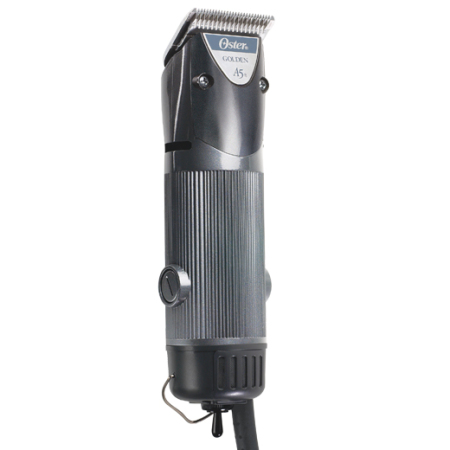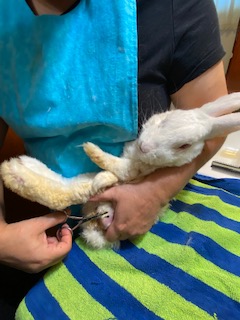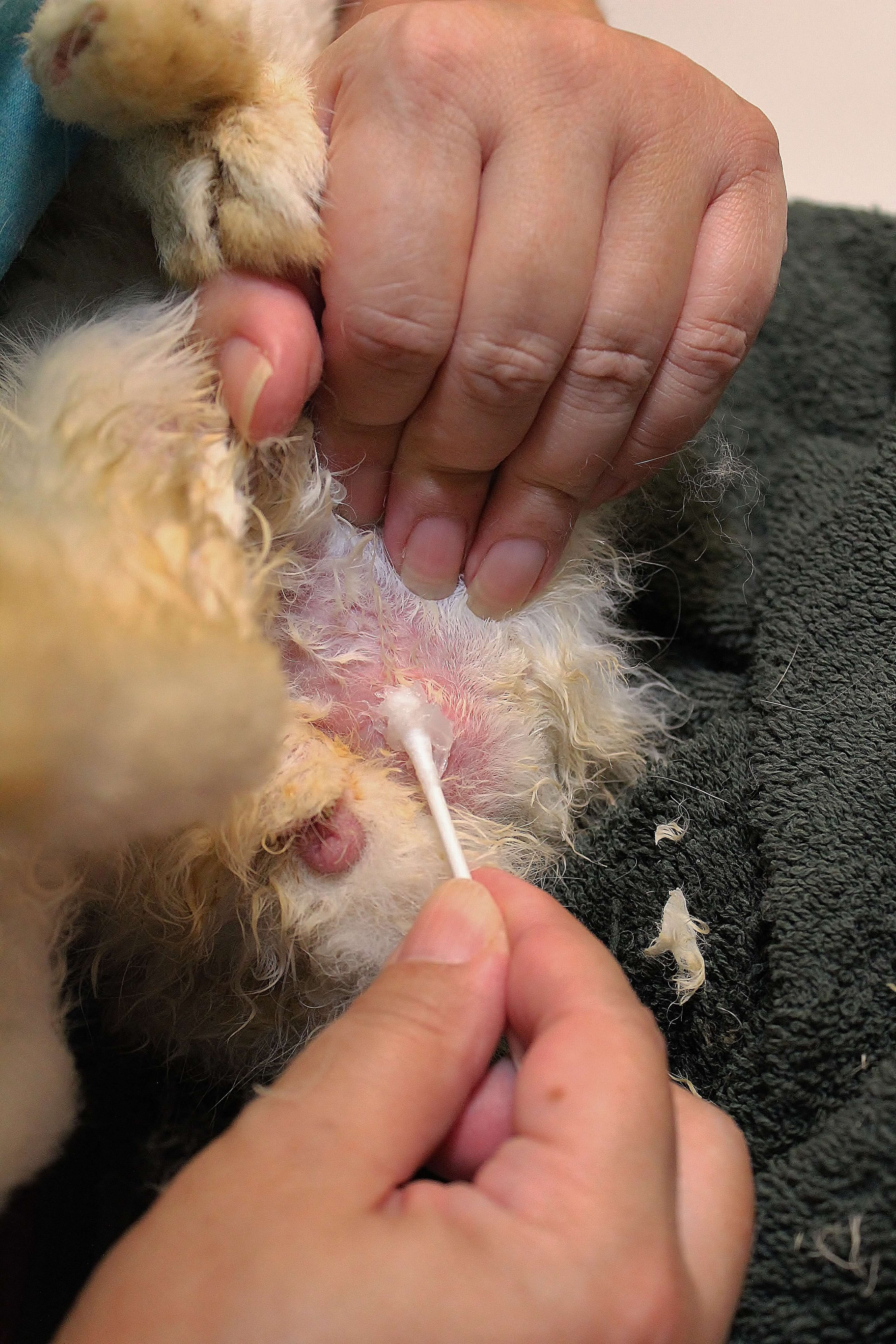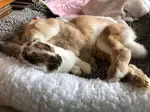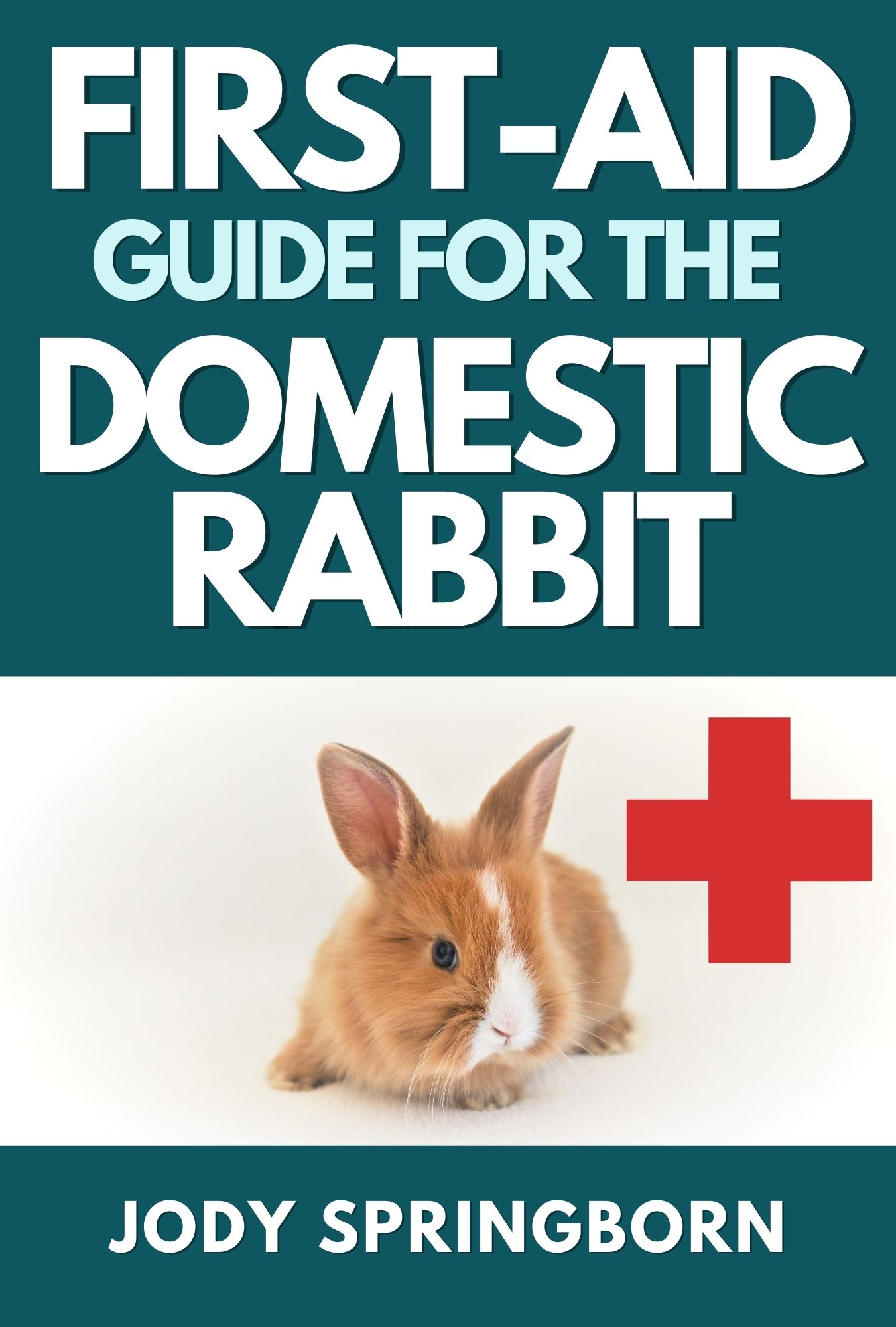- Home
- Rear End Paralysis Care: Cleanliness
Rear End Paralysis Care: Cleanliness
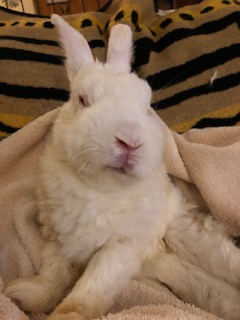 This article is dedicated to Eddie.
This article is dedicated to Eddie.Thanks for all the help, sweetheart.
Key Points:
- Keeping your rear end paralysis bunny clean is essential for good quality of life.
- Minimizing urine scald protects the skin from inflammation and blistering and reduces the chance of infection.
- Most of the time, you can keep a bunny clean with just warm water.
- There are different methods to giving a bunny a butt bath. It depends on how your bunny is compromised.
- Always be secure with your handling, use just the minimum amount of water and dry thoroughly.
Keeping your Bunny Clean and Dry
An important part of rear end paralysis care is cleanliness. Keeping your disabled bunny clean is essential for a good quality of life. This can be a challenge for both you and your bunny, especially at first. Once a routine has been set, it will become easier to handle and any future adjustments needing to be made will feel minor.
The focus of our attention will primarily be urine in the groin area. This includes the inner thighs and legs and the area around the tail. Unless your bunny decides to roll in cecotropes or is splayed (or similarly disabled) in such a way that he lays flat on the floor, you typically do not need to worry about anything above the waist.
Why is cleanliness so important? Urine can inflame the skin, breaking it down. Uneaten cecotropes get trapped in fur and invite the growth of harmful bacteria. The whole groin area becomes extremely painful for the bunny, who then is reluctant to move any further, exacerbating the problem. Pressure sores form, and if left untreated, they may become infected and cause the bunny a great deal of pain. In extreme circumstances, if left untreated, the infection may cause sepsis and death.
The Basics
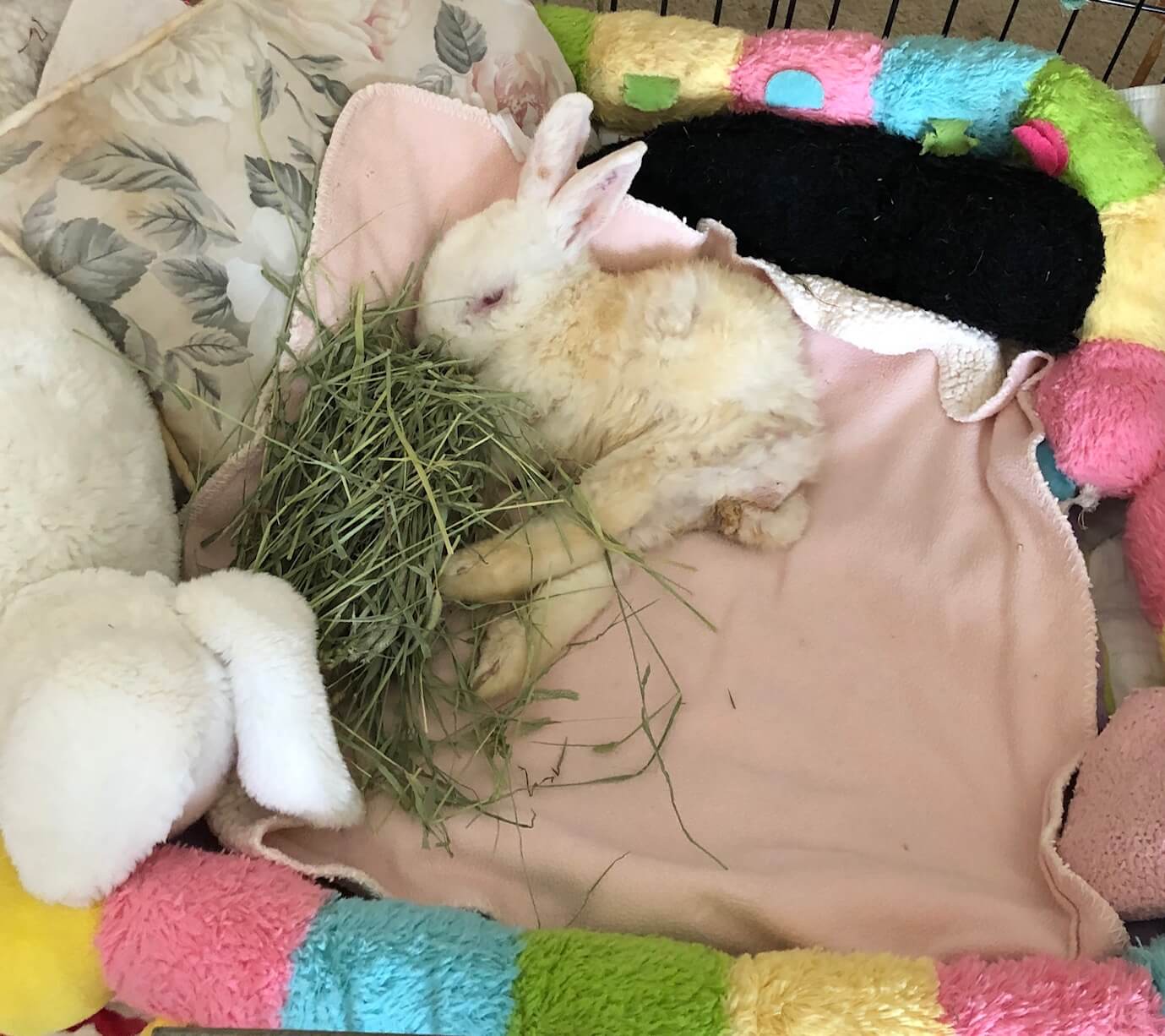 Eddie chilling with his stuffies and a snack.
Eddie chilling with his stuffies and a snack.Creating a soft bed with absorbent bedding is important, not just because a hard floor is painful, but also because it is essential for keeping a rear end paralysis bunny clean. The article, Rear End Paralysis Care: Setting Up the Pen and Socialization discusses various types of absorbent bedding that can be used to make up the bed.
An important note when setting up a bed, don't forget to layer! Having a bath mat on top of a towel, is not going to be either comfortable or keep your bunny clean. Multiple layers will draw moisture away from your bunny's skin and give your bunny much needed support.
The top bedding should be checked and changed at least twice a day. Sometimes, you might be able to get away with skipping a change, but that is not usually the case. With multiple layers, you should only have to change the top layer or two and not the entire bed. This is an easy way to keep your disabled bunny clean from the worst messes, while keeping bunny laundry to a minimum.
Dryness goes hand-in-hand with cleanliness. Wet fur, especially when matted, irritates the skin with prolonged exposure. If your rabbit is elderly or has arthritis, dampness is not comfortable and - in extreme cases - can lower body temperature.
The Tools
Quite often, you may only need to use a washcloth and some warm water to wipe urine away from the skin. This is especially true if you check your bunny a couple times a day. However, there are still times in which you may need to be more thorough.
CleanZymox is a good shampoo to use when a bunny's skin is irritated and inflamed from urine. The shampoo uses a combination of enzymes, proteins and Vitamin D3 to combat any bacterial and fungal infections. It is gentle enough to be used to clean and protect the skin daily, if necessary. After you clean the skin, use a blow dryer set on the lowest temperature. While using the dryer, gently loosen any knots or mats with your fingers or comb. The fur will dry faster and you can feel the temperature. If it's too hot for you, it's too hot for your bun. Trim and Clip |
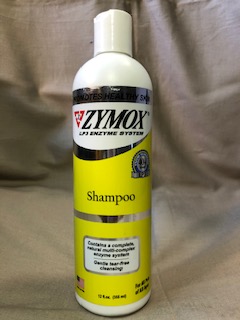 Zymox shampoo Zymox shampoo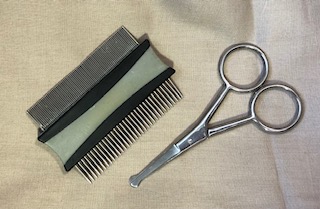 Comb with two different sizes and Blunt-nose grooming scissors. Comb with two different sizes and Blunt-nose grooming scissors. |
|
Urine-soaked fur is difficult to clean. If the fur in and around the groin is left intact, it absorbs the urine and keeps it close to the skin. Pet grooming trimmers or grooming scissors and facial trimmers for men are good tools for maintenance, as well as getting into hard to reach spaces. However, initially, you will want to trim the fur right to the skin. For that, it's best to use a grooming clipper with a #40 or #50 blade, which will produce a very close shave. This is the same tool and blade vets use when preparing an area for surgery on an animal. If you are concerned about using cutting tools in this sensitive area, bring your bunny to your vet so they can give your bunny a "sanitary clip". If necessary, they will sedate your bunny. |
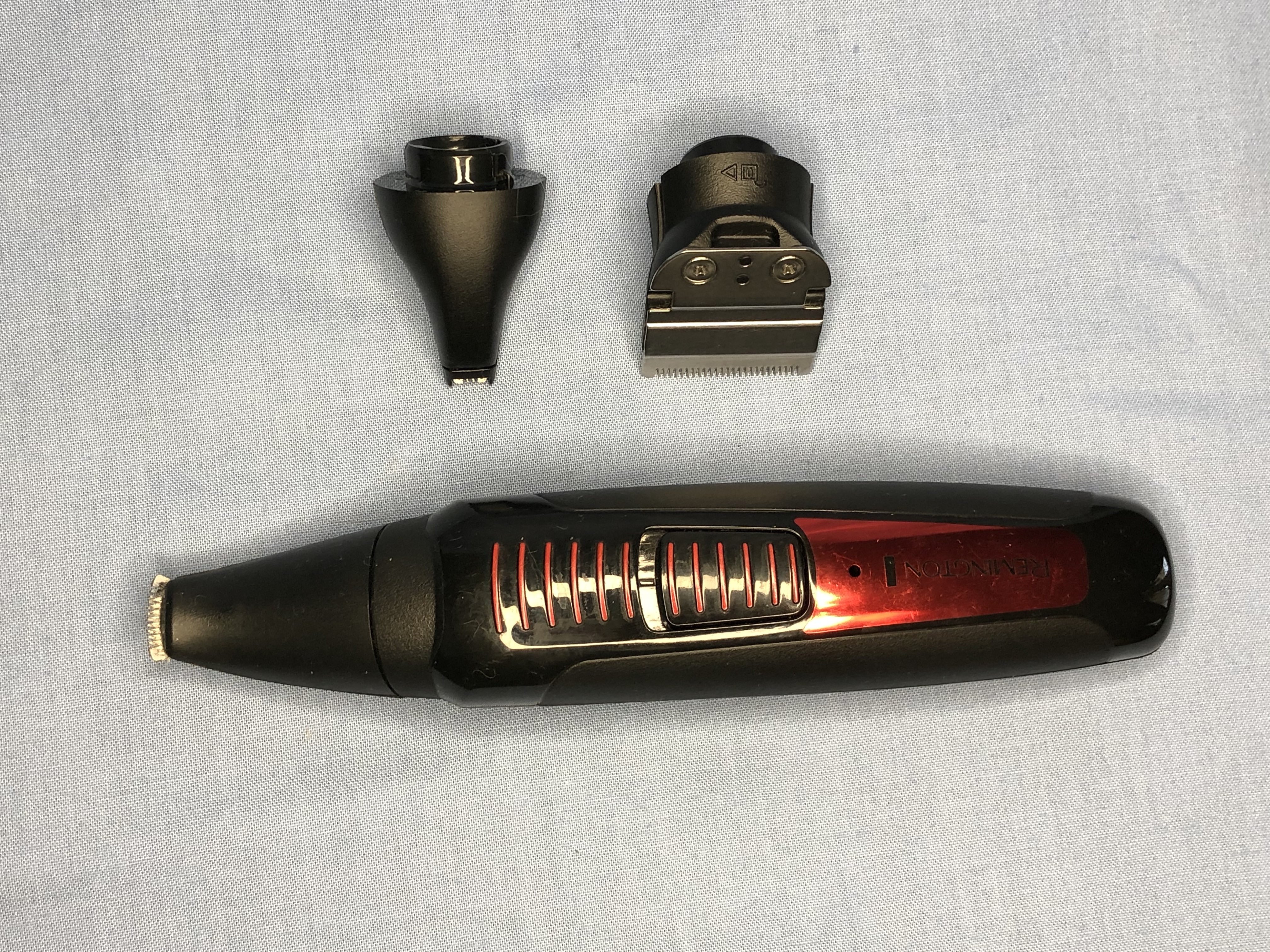 Facial trimmer for men. This is good for quick spot removal of the occasional tuft of fur. It's a little safer than using scissors, but typically cannot handle big areas, mats or wet fur. Facial trimmer for men. This is good for quick spot removal of the occasional tuft of fur. It's a little safer than using scissors, but typically cannot handle big areas, mats or wet fur. |
ProtectOnce cleaned, dried and all the fur removed, protect the skin with a thin waterproof layer. For mild irritation, Vaseline® or Aquaphor® are good choices. Both are petroleum jelly products which will will protect the skin and allow it to heal. The best product to use on skin that is highly inflamed, blistered or cracked, is a diaper rash cream, such as Desitin®. It's a thick paste that acts like an impenetrable barrier against urine. It might become your favorite item in your bunny grooming kit. Be aware these products were made with babies in mind. If you get this paste in fur, it will be impossible to get out. If your vet has prescribed an antibiotic cream for your bunny, make sure you apply the medicine on the clean skin first before using either petroleum jelly or Desitin on top of it. |
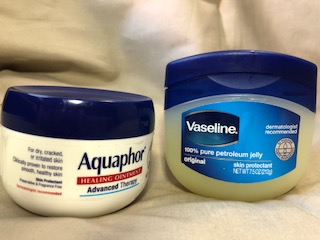 Aquaphor and Vaseline are good choices when you are looking to soothe and protect skin. Aquaphor and Vaseline are good choices when you are looking to soothe and protect skin.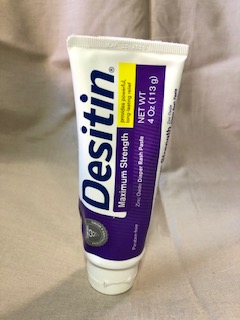 Desitin is one of many diaper rash creams on the market. The thick paste makes it ideal to keep disabled bunnies clean and comfortable. Desitin is one of many diaper rash creams on the market. The thick paste makes it ideal to keep disabled bunnies clean and comfortable. |
Optional Tools
Baby Wipes: Some people will use baby wipes for minor spot cleaning. Minor spot cleaning would be a poop or two stuck on the fur or a small urine stain on the tail. Many people dealing with a rear end paralysis bunny for the first time often purchase these wipes and attempt to do a major clean up with them. The wipes will not be able to handle that. Personally, I don't find them necessary as a washcloth with warm water will do the trick, and I don't have to worry about the ingredients in the baby wipe. If you do decide to use baby wipes, purchase ones that are unscented, alcohol-free and hypo-allergenic.
Diapers: This is also a popular product many people will purchase. Generally speaking, diapers have the potential to do more harm than good, however, there is a specific use for them. The problem is that they hold all the urine and poop close to the skin, and exacerbate the situation if your bunny happens to pass cecotropes while wearing a diaper. Odors and wet fur also worsen.
However, diapers do have a limited use. For example, if you want to cuddle with your bunny while you two watch your favorite TV show, a diaper would be a suitable option for the hour or so you are on the couch. Another example might be if you take your bunny to physical therapy. I would recommend you limit a diaper's use to 1-2 hours.
Purchase diapers made for dogs as they have a hole for the tail and come in sizes that will fit a 4lb animal. Do not get diapers for male dogs, as they fit differently. Diapers for human babies are too large for bunnies. The only ones that might fit are those made for premature babies. You will still need to cut a hole in the back for the tail.
Cornstarch: Cornstarch is really effective if you do what is called "dry" baths. If your bunny has dry poop or hay stuck to the fur, you can sprinkle cornstarch on the affected areas. Work the cornstarch in the area and then comb it out. The cornstarch absorbs any moisture and allows for debris to be combed out more easily. Make sure you use a washcloth to wipe away in excess cornstarch before putting your bunny back in their pen or bed. This technique isn't good if the area is soaked in urine at the start, nor do you want cornstarch to stay on the bunny. I typically skip the cornstarch and just gently comb out any debris from the fur without it.
A Word About Bathing
Generally, you never have to bathe a healthy rabbit. They are very clean creatures that usually do not need our help. The exception comes when it becomes medically necessary, and even then, you almost never bathe a rabbit like you might a dog.
Rabbits typically do not do well with water, especially being submerged. It's a very stressful experience and there are numerous stories where rabbits died from the stress of being bathed. Therefore it's important that we minimize the stress as much as we can. Points to remember:
- Make sure you use your hands and body to support your bunny and make him feel secure.
- If you need to have your bunny sit in water, fill just enough to get the job done, which is usually 1-2 inches.
- Dry well, especially if it gets cold in your house.
- Take your time. Be patient.
- Give your bunny a treat afterwards.
Butt Bath Methods
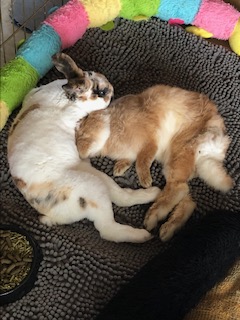 Roxanne and Poppy both laid on their side. Although I still had to give them an occasional butt bath, it helped that they urinated away from their body.
Roxanne and Poppy both laid on their side. Although I still had to give them an occasional butt bath, it helped that they urinated away from their body.There are different ways to clean the groin or underside of a disabled bunny. What method you use depends on how your bunny is compromised.
If your rear end paralysis bunny is lying on his side, he will still urinate away from his body. Normal rabbits will lift their tail and push back their hips when urinating. This is what a rear end paralysis bunny, who can still urinate on his own, will do. If the bedding is absorbent and layered, urine scald will not be a major problem. The exception to this would be if your rabbit cannot empty his bladder properly and urine dribbles onto his skin. Expressing the bladder (this is where you manually push on the outside of the bladder to push urine out of your bunny) will help keep your bunny clean and dry. Expressing comes with some risk, so make sure you speak to your vet first. Your vet will show you how to manually express the bladder properly.
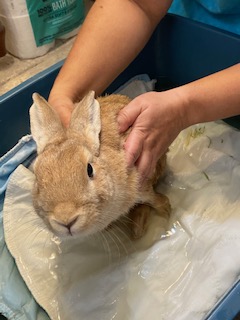 In this situation, Dior has already developed pressure sores so I am soaking her rear in povidone-iodine solution (antiseptic solution) to help heal her skin.
In this situation, Dior has already developed pressure sores so I am soaking her rear in povidone-iodine solution (antiseptic solution) to help heal her skin.If your bunny can sit up, but drags his rear (such as Dior pictured right), he will more likely sit in urine and poop. Using proper bedding and checking it at least twice a day will be very important. Expressing the bladder several times a day will help a great deal in keeping your bunny clean.
In both situations described, a disabled bunny can be washed in a sink under a faucet (or using a hose attachment). The key is to steady the bunny well against your body to make him feel secure and to target the washing to just the affected area.
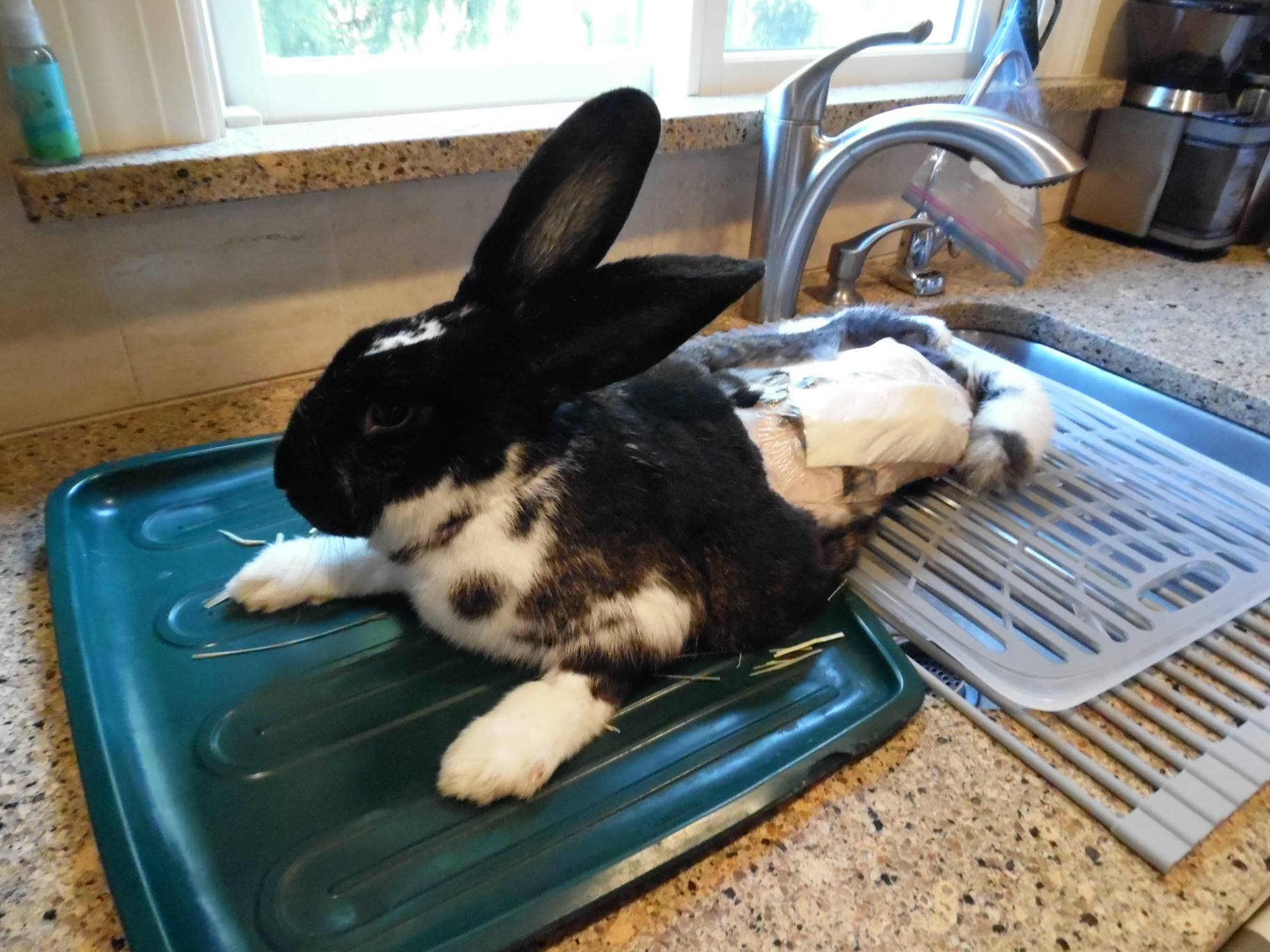 Willow had surgery for a fracture in her lower spine. Afterwards, Willow needed to be strictly confined for the next 4-6 weeks following surgery. Her owner needed to be creative to properly keep her bunny clean, so she used dish mats and racks to wash and dry Willow with minimum stress.
Willow had surgery for a fracture in her lower spine. Afterwards, Willow needed to be strictly confined for the next 4-6 weeks following surgery. Her owner needed to be creative to properly keep her bunny clean, so she used dish mats and racks to wash and dry Willow with minimum stress.Photo credit Judith Books
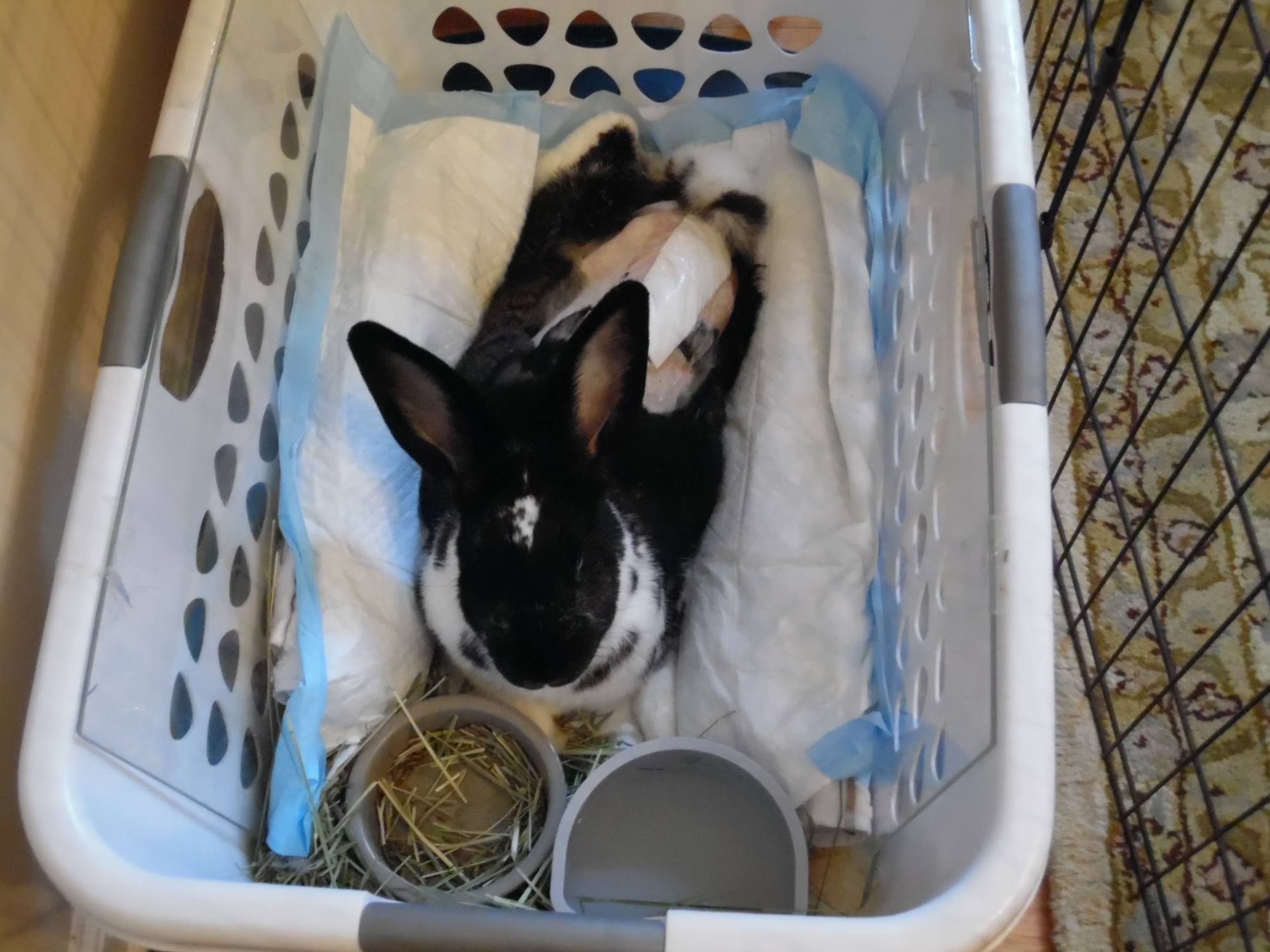 Willow in her bed.
Willow in her bed.Photo by Judith Books.
Willow (pictured left) had surgery on her lower spine and needed strict confinement for several weeks. She was laying on her stomach, which meant that she would most likely be laying in poop and urine. Keeping her clean while minimizing handling was a challenge her owner met.
Two drying racks were placed one on top of the other to provide support, while allowing urine, poop and water to drain away and protecting the feet from being caught between the gaps. The hose attachment helped to wash Willow without needing to move her.
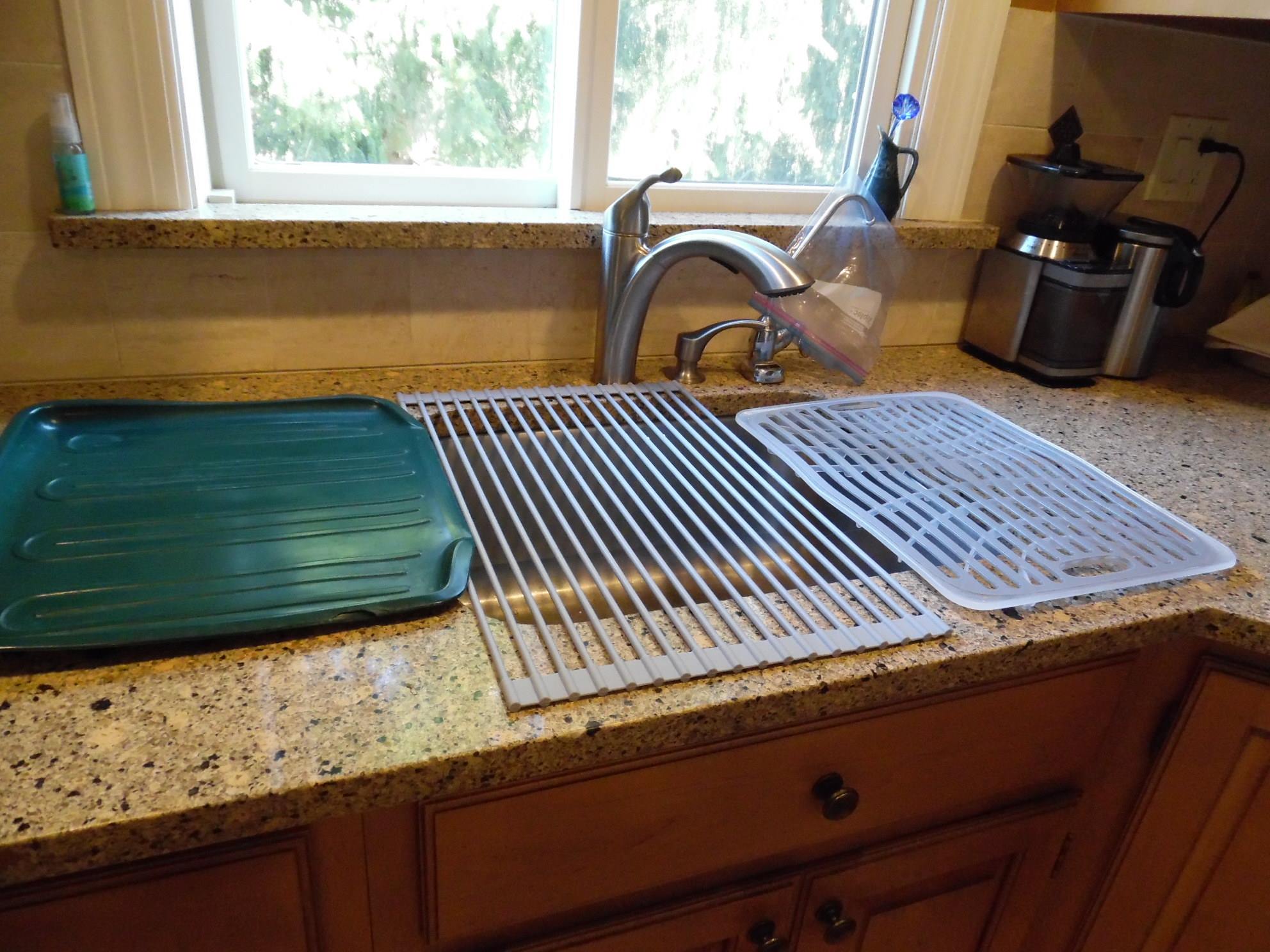 Photo by Judith Books Photo by Judith Books |
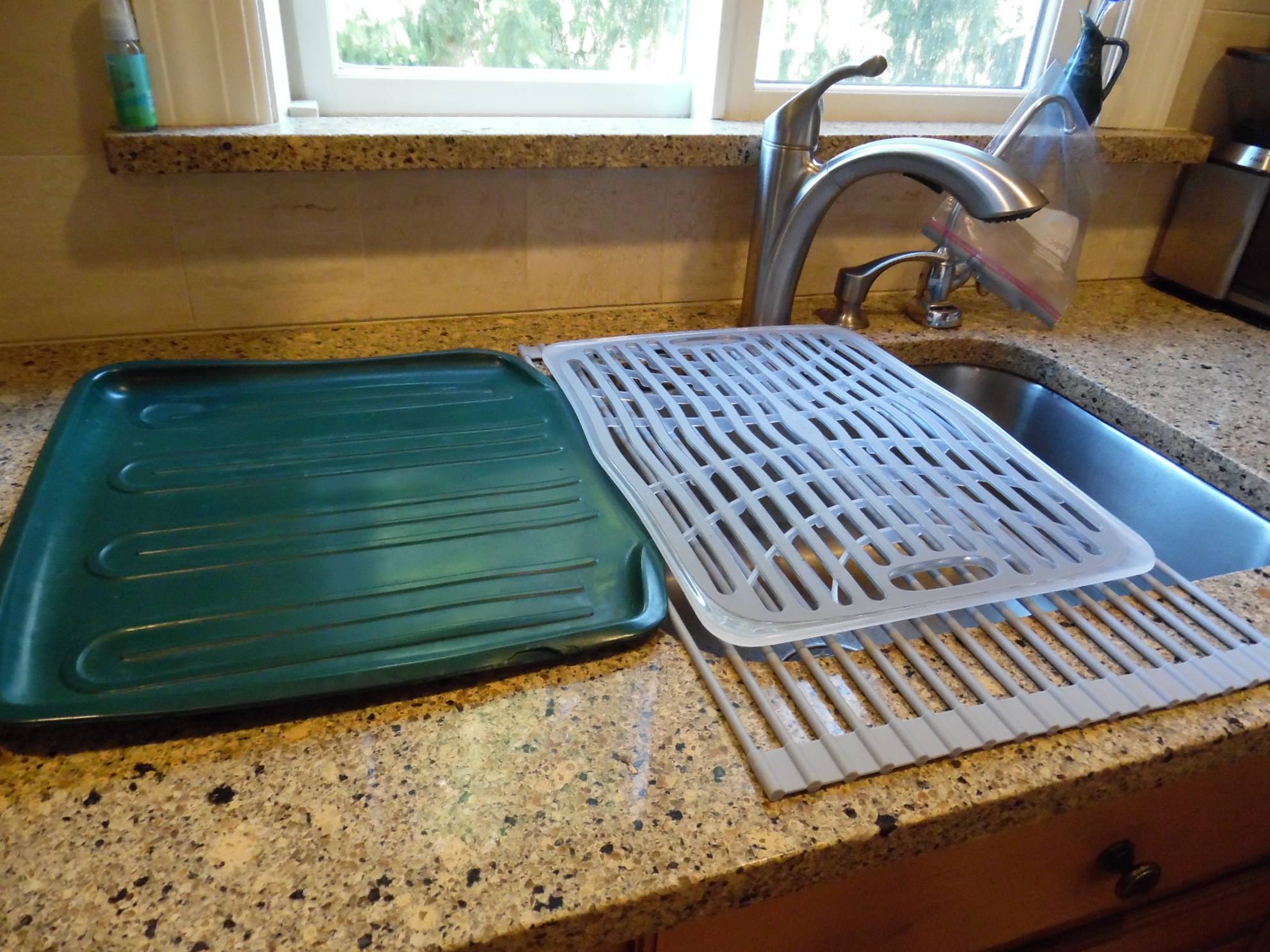 Photo by Judith Books Photo by Judith Books |
 Drying Willow after her bath.
Drying Willow after her bath. Photo by Judith Books.
After bathing, Willow's owner used microfiber towels and a blow dryer, set on low, to dry Willow off completely.
This method was a perfect set up for Willow. She was able to remain clean and dry, while accommodating her medical condition.
This method would also work for those bunnies who may be dealing with splay legs. Splay legs is a situation in which the front, hind or all four legs are spread out from the body, acting more like flippers. If the front legs (or all four) are splayed out, the bunny is probably prone, meaning the bunny is laying on his stomach and chest. In this situation, there is a good chance that more than his groin may need to be washed.
Another way to tackle this problem is to take two litter boxes (or any small tub), place a towel on the bottom. This is so the bunny is resting on something that isn't slippery. Fill the tubs with enough warm water to get the bunny wet. Use the Zymox shampoo to wash the soiled area. Next, you can move the bunny to the second box and rinse away the shampoo with warm water. Gently squeeze out excess water and dry with a blow dryer. While the bunny is in water, always keep a hand on the rabbit to make sure he doesn't escape and make the bunny feel more secure. You don't need a strong grip. It's more like a firm touch.
Butt Baths: One Method Step-by-Step
No matter what method you decide to use, they all need you to follow these key points:
- Secure your bunny
- Use the minimum of water
- Dry well afterwards
First, prepare your work area. Make sure all your grooming tools are within easy reach, before you get your bunny. These include combs, scissors and/or clippers, shampoo, towels (make sure you have an extra one nearby) and a blow dryer. If it takes awhile for your tap water to get hot, run it beforehand so you are not holding your bunny and waiting for the water to heat up.
|
1. Once you have all your tools ready, pick up your bunny and bring him to the sink. One hand should be around his chest (your second finger should rest on the chest, while the thumb and third finger are wrapped around the front arms. Read 'How to Pick-Up a Rabbit" under the article, Handling Rabbits). The opposite hand supports the rear. Always keep the bunny as close to your body as possible. | |
|
2. Turn on the faucet and set it to a lukewarm temperature. Brace your bunny against you, and position the bunny's groin under the running water (or use the hose attachment). If necessary, shampoo the area. Otherwise rinse away the urine and poop well with water. Always brace the bunny against you! Tip: If you are working in a deep sink or tub, make sure you always have a good hold on your bunny and keep him close to a surface, in case he slips from your grip. The important point is that you are always holding your bunny. 3. Once your bunny is rinsed clean, gently squeeze out excess water and wrap your bunny in a towel. Continue to pat him dry as much as possible. In areas that are matted, such as the feet or the side where he lays on the most, towel dry as much as you can. Otherwise, it will take a long time to dry using the dryer. Tip: Avoid getting the feet wet. The fur is usually very thick and it takes a long time to dry. If necessary, I use a comb to remove any poop or hay and a washcloth to wipe away any urine. | |
|
4. Still holding the bunny close, use the blow dryer set on low (warm or cool, depending on the brand of dryer). You can gently rub the wet fur, either with your fingers or a soft, dry washcloth. This helps the fur dry faster and you can monitor the temperature of the air coming out of the blow dryer itself. If it feels too hot for you, it's too hot for your bunny. Tip: If there is mats on the side of the hip, leg or ankle where the rabbit lays against, leave those in place. It provides an extra protection from pressure sores. 5. Once the bunny is dry, take the clippers or small grooming scissors and trim any excess fur from the groin. Trim as close to the skin as possible. Be aware of the location of the tail and the curves of the body. Tip: If you are new to this, place a hand over the anus and urogenital opening to protect the area from any accidental cuts. The skin is extremely delicate in this area. Keep your clipper or scissors parallel to the skin and proceed slowly. The most important thing is to take your time. If standing does not work, having your bunny sit on your lap while you work on him is also a great solution. In my experience, rear end paralysis bunnies are typically easy to work with. Even if they were wild in their younger years and didn't like being handled, they normally relaxed into the routine quickly, as if they knew I was there to take care of them. 6. Once the area has been cleared of fur, protect the skin by using either Vaseline, Aquaphor or diaper rash cream on the skin. 7. All clean and dry! Your bunny is ready to be put back into his bed. |
In Conclusion
The information presented may seem intimidating for owners facing care for a rear end paralysis bunny at first. Take things slowly - one step at a time. Making sure your bunny is clean and comfortable will become very routine over time. You will figure out quickly what works for both you and the bunny. There will be new opportunities to bond and become closer to your disabled bunny than ever before. Although there is a sadness that comes in seeing your bunny injured or aging, there is also joy that comes from providing the best possible care for a much beloved rabbit.
